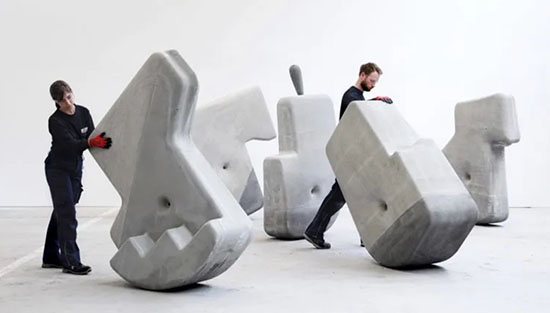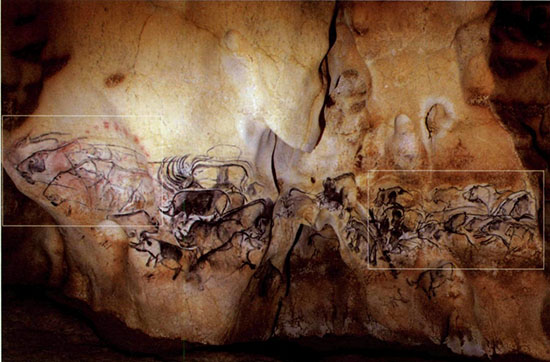Authors: Oguzhan Ozcan
Posted: Thu, August 01, 2019 - 2:07:25
I wrote this blog to remind young researchers who are surrounded by technology trends that, in the future, these technologies will change their form or may no longer even be mentioned. However, the holistic ideas behind them might be implemented by re-reading their past to create novel futures.
Re-reading is based on inspiration for generating ideas and their analogies. Sources of inspiration can include art, nature, urban life, people, digital content, and obsolete artifacts. Analogy establishes the relationship between these known sources and your unknown ideas. In this process, by re-reading, the essence of the existing approach or mechanism is determined and then adapted to the new one.
Re-reading has been often used in literature, music, history, and philosophy. Although the value of the re-reading method in idea creation has not been fully proven, awareness of it has been increasing. A very recent example of this is the Walking Assembly Project. In the project, the construction of Stonehenge (3,100 B.C.) was re-read, investigating how the building stones were carried by human hands rather than machines. New forms were then designed to provide similar opportunities.

The Walking Assembly Project reintroduces the potentials of ancient knowledge to better inform the transportation and assembly of future architectures. (photo: Matter Design)
From this perspective, there are many lessons to be taken from the past for virtual reality (VR), which has again become a trend. However, this trend follows a technology-limited perspective, in which the definition of VR is limited to the current technologies. On the other hand, throughout history VR has been shaped by non-realism, expressions of space-time, and optical illusions.
In the ontological analyses extending from the ancient philosophers to Plato, especially in architecture, reality is considered to be a sharp view and also a bad picture that prevents us from seeing what we actually want to imagine. Since then, a wide variety of illusions (or virtual realities) have been experimented with as alternatives. Those efforts reflect our dreams for alternative realities in design, especially architecture.
The first well-known example of the art of animation is thought to have been made in the Paleolithic Period. These are cave paintings in which an animal's movements are expressed. This discovery, made in France in the late '90s, reveals a time much earlier than the first zoetrope in the 19th century, which had been accepted as the official starting date of cinema technology. In this ancient period, early humans depicted animal figures drawn on top of each other. When you move a torch back and forth, it is possible to see an animation that gives the impression that the animal is moving. From what we can understand from this point on, the curiosity to express space-time has been with us since the dawn of humankind.

The Grand Panneau of the Salle du Fond at Chauvet Cave, an example of Palaeolithic graphic narration with, on both sides, two successive hunting sequences displaying cave lions. (photo: J. Clottes, Chauvet Science)
Returning to architecture, the design of spaces like those we might imagine Plato had in mind was an endeavor of the ancient Greeks. Perhaps the Pantheon is the most important first example of this. Within the technique called optical projection, the midpoint of the columns of the building facade was made relatively swollen compared to the head and lower ends, causing the columns to be seen without shifting into perspective when viewed from the ground.
On the other hand, in some old Roman or Baroque-period monuments, architecture was designed to create the illusion that short corridors were actually long, or that a flat church wall or ceiling was actually a dome.
Today, “realism versus non-realism” is also discussed by some designers, ignoring the limitations of current and possible future technologies. One of the current approaches is the manifesto called “transparent drawing.” According to this manifesto, a combination of visual expression, proliferating and complex information, perspective view, a desire to build, and a desire to be realistic has become a “gangrene.” This prevents the designer from holistic thinking; therefore, as humans, we must return to our “factory settings” as soon as possible. Otherwise, we cannot find out what we really want within the dizzying vortex of technological development. The authors warn us that our thinking will surrender to the flow of technology that we do not know. Transparent drawing aims to reveal the virtual dimension of our imaginary universe in a more transparent way by expressing what must be seen behind the realistic images in a drawing.
In a sense, this idea behind transparent drawing confirms the Wagnerian approach to holistic thinking in art. The concept of Gesamtkunstwerk (“total work of art” or “synthesis of arts”) proposed by 18th-century thinker Eusebius Trahndorff, was later in the 19th century questioned by Wagner, who wondered what the ideal relationship between music, text, and dance should be in a holistic structure. Wagner, in this thought, was discussing what kind of an illusion must be created that would force the human brain to look far beyond the opera. Even today, Wagner's ideas present a universal point of view that is still debated, and his arguments are triggers to explore the boundaries of creativity that leave out the technology, the existing conditions, and the molds. Such approaches run counter to current VR trends, which are based on current technological limitations. We have yet to fully respond to this holistic thought in current VR research and applications.
After looking at the brief summary of thousands of years of know-how above, how meaningful is it to ask questions such as “how do we produce content?”, “how should we do marketing?”, how can we manage this environment?”, “what do we do according to the user's expectations?”, and “how do we produce content in today's current trends in technology-based VR research?”
Instead, isn’t it better to re-read the curiosity and the ideas produced long ago?
One way of overcoming the technology-limited perspective on VR is to design a 101-level university course to promote this awareness that would be taken at the beginning of one’s academic education. My next effort will be to prepare and implement course content according to this vision of re-reading the past and to see the results.
Posted in: on Thu, August 01, 2019 - 2:07:25
Oguzhan Ozcan
View All Oguzhan Ozcan's Posts






Post Comment
No Comments Found